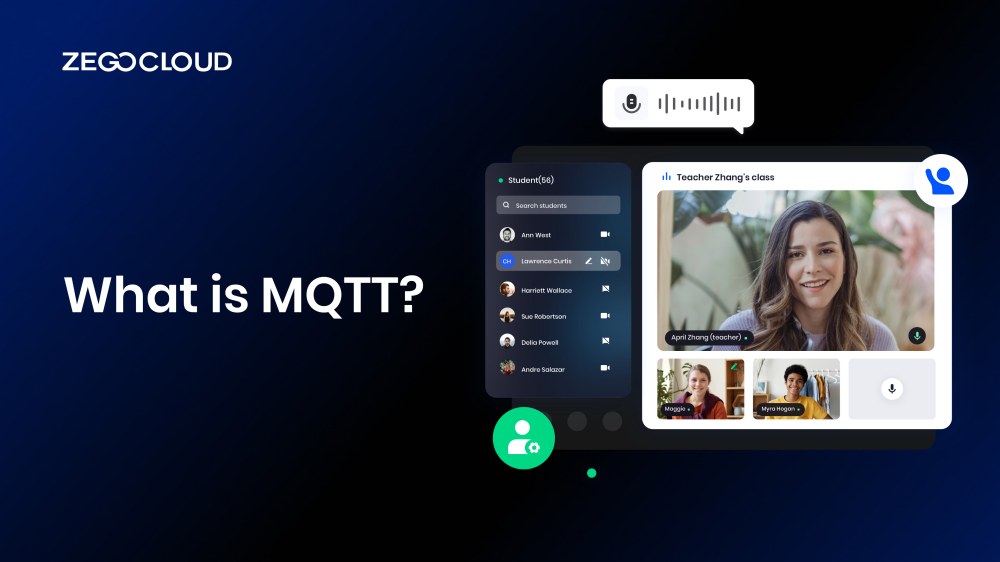If you are a person who has an eye on the world of IoT, you might have heard the term MQTT protocol. This term refers to the communication protocol, which makes communication smoother and more systematic. It is mainly used in different applications of IoT to build a sustainable communication channel between sensitive devices. In this article, we will explore the meaning of MQTT, its components, and how it works.
What is MQTT, and What is its History?
MQTT is an emerging communication protocol widely used in the IoT industry because of its efficiency and reliability. This lightweight, open messaging protocol enables smooth machine-to-machine data exchange, even in low-bandwidth environments. Originally designed for communication in the gas and oil industries, MQTT later gained popularity in the smart device sector for its strong performance and flexibility.
Engineers in the gas and oil industries developed the MQTT protocol in 1999 to create a reliable way to exchange information seamlessly across systems. IBM Cloud supported its early development and gave it the name MQTT. In 2019, OASIS introduced version 5, officially establishing MQTT as the standard protocol.
Why is the MQTT Protocol Important?
There are several reasons why the MQTT protocol is very important. This includes the main feature that this protocol is very lightweight and helpful in the IoT industry. Moreover, check out the following reasons that tell the importance of this exciting protocol:
1. Scalability and Security
MQTT has several built-in features that greatly help several IoT devices. Its implementation requires minimal resources, which makes it the perfect communication protocol for small controllers. In addition, it allows the developers to easily encrypt the messages and data transmission from authenticated devices to ensure there is no security breach.
2. Lightweight & Reliability
One of the exciting features that this MQTT Protocol has is its built-in features. These features help reduce the time IoT devices take to reconnect with the cloud. MQTT is very lightweight, so small IoT devices can use it and consume less energy. This helps IoT devices to work more efficiently.
3. Quality of Service Levels
Based on the requirements of the application, MQTT provides three levels of quality of service to ensure the reliability of the delivered message. This feature allows the developers to select the right level of QoS to match the importance of messages.
4. Messages Retention and Bandwidth
With the help of the MQTT protocol, the Broker can store the published last messages on any topic. This way, the new subscribers of the topics can receive the latest value once they subscribe. Moreover, the lightweight nature of MQTT makes it the perfect option to use in environments with low bandwidth.
What Languages is MQTT Written in?
MQTT is a protocol, and its implementations are available in various programming languages. Some of the most common languages in which MQTT client and broker libraries are written include:
- C: Often used for embedded systems and low-level devices.
- Java: A popular choice for both server-side applications and Android apps.
- Python: Frequently used for rapid prototyping and scripting.
- JavaScript: Commonly used for web applications, especially with frameworks like Node.js.
- Go: A modern language favored for building scalable and high-performance applications.
These implementations make MQTT versatile and applicable across a wide range of platforms and use cases, from IoT devices to cloud-based applications.
What are MQTT Components?
This amazing publish and subscribe messaging protocol has many components that make it more impactful. From its list of components, a few are listed below, which you can check out:
- MQTT Client: MQTT Clients are those different devices or applications that use the MQTT Client library. These devices can act as both publishers and receivers depending on the Client sending or receiving messages.
- MQTT Broker: In addition, MQTT Broker is the one that handles disconnections, unsubscribe requests, and routing messages. A single but powerful MQTT Broker can alone support many connections, which can help IoT service providers build reliable MQTT applications quickly.
- MQTT Connection: Many clients and brokers use the MQTT connection to communicate with each other. This communication starts when the Client sends connecting messages to the MQTT Broker. Once the Broker confirms the message, a connection gets established between the Client and the Broker.
How Does MQTT Work?
MQTT follows a straightforward mechanism that ensures smooth communication between two or more devices or machines. This protocol has two main components, the MQTT Client and the Broker. The MQTT Client starts the communication process by sending a connection message to the MQTT Broker. Following this, communication starts when the Broker responds to this connection.
Remember one main thing the Client can act as a sender and receiver by publishing and receiving messages. In addition, the MQTT Broker uses the term “topic” as a keyword to filter the messages for the Client. In the case of a connection break between the subscribing Client and Broker, the broker buffers the messages and pushes them back toward the client as it gets online.
MQTT Use Cases and Examples
MQTT is widely used in scenarios where efficient, lightweight, and reliable messaging is required, especially in IoT and real-time communication. Here are some key use cases and examples:
1. Internet of Things (IoT)
- Smart Homes: MQTT can be used to control smart home devices like thermostats, lights, and security cameras. Devices send data to a broker, which then distributes it to other devices or the cloud.
- Wearables: Devices like fitness trackers send sensor data (heart rate, steps, etc.) to a central server using MQTT for real-time monitoring.
2. Industrial Automation
- Smart Manufacturing: MQTT is used in industrial settings for machine-to-machine communication. Sensors and equipment on the factory floor send real-time data to a central server to monitor performance, detect faults, and optimize processes.
- Predictive Maintenance: Sensors on industrial machinery can send alerts via MQTT about potential issues, allowing companies to address problems before they lead to costly downtime.
3. Connected Vehicles
- Fleet Management: MQTT is used to track vehicles in real-time. GPS data, vehicle health statistics, and driver behavior are continuously sent via MQTT to a central system for monitoring and analytics.
4. Healthcare
- Remote Patient Monitoring: MQTT is used to transmit real-time patient data from medical devices (e.g., heart monitors, glucose meters) to healthcare providers for immediate analysis and intervention.
- Telemedicine: Real-time communication between doctors and patients for remote consultations or diagnostics can leverage MQTT for message exchange.
5. Energy Management
- Smart Grids: MQTT is ideal for monitoring energy consumption in smart grids. It allows devices like smart meters to send usage data to the grid operator in real-time for monitoring and optimization.
- Solar Power Systems: Sensors in solar panels can send performance data via MQTT, helping operators to track system performance and spot inefficiencies.
6. Real-Time Messaging and Collaboration
- Messaging Apps: MQTT is also used in real-time chat applications where low latency and efficient message delivery are important. It allows for instant delivery of messages between users, even in low-bandwidth environments.
- Collaborative Workspaces: Applications that require real-time updates, such as online document editing or project management tools, can use MQTT to synchronize information between all users instantly.
7. Agriculture
- Precision Farming: MQTT is used in agricultural IoT to monitor soil moisture, temperature, and other environmental factors. It helps farmers optimize irrigation, fertilization, and pest control based on real-time data.
8. Retail and Customer Engagement
- Inventory Management: In retail, MQTT can be used to track inventory levels across multiple stores in real-time. The system can trigger automatic restocking orders when inventory is low.
- Personalized Shopping Experiences: Retailers use MQTT to deliver real-time promotional messages or offers to customers based on their location or shopping behavior.
How to Use ZEGOCLOUD and MQTT Together
Combining ZEGOCLOUD and MQTT can create powerful solutions for real-time communication and device interaction. ZEGOCLOUD provides seamless video, audio, and live streaming services, while MQTT offers a lightweight messaging protocol for efficient data transfer in IoT and real-time applications.

Why Use ZEGOCLOUD and MQTT Together?
- Real-Time Communication: ZEGOCLOUD powers video and audio calls, while MQTT handles background data transfer, ensuring smooth, low-latency interactions.
- IoT Integration: In applications like smart home or industrial IoT, ZEGOCLOUD can deliver live video feeds, while MQTT efficiently transmits sensor data or commands between devices.
- Scalability and Efficiency: MQTT’s low-bandwidth requirements make it ideal for large-scale deployments, while ZEGOCLOUD’s flexible solutions scale with your communication needs.
By combining these two technologies, you can create integrated, real-time applications that seamlessly connect devices and users.
Conclusion
In conclusion, MQTT is a lightweight and efficient messaging protocol designed for real-time communication, especially in IoT environments. Its low bandwidth requirements and reliable message delivery make it ideal for applications involving resource-constrained devices. By supporting bi-directional communication and ensuring minimal data overhead, MQTT enables seamless connectivity for various industries, from smart homes to industrial automation, making it a powerful tool for modern, connected systems.
Read more:
- 10 Most Popular Chat & Messaging Protocols: In-depth Features Comparison
- AMQP vs MQTT: How to Choose Instant Messaging Protocols?
FAQ
Q1: What is MQTT and why is it used?
MQTT (Message Queuing Telemetry Transport) is a lightweight, open-source messaging protocol used for small sensors and mobile devices in low-bandwidth or unreliable networks. It is designed to be simple, efficient, and reliable, making it ideal for real-time communication in IoT (Internet of Things) applications. MQTT allows devices to send and receive messages in real-time, even in scenarios where network connections may be unstable or intermittent.
Q2: What does MQTT stand for?
MQTT stands for Message Queuing Telemetry Transport. It is a messaging protocol for sending and receiving telemetry data over networks, typically used for machine-to-machine (M2M) communication in IoT environments.
Q3: Why use MQTT instead of HTTP?
MQTT is preferred over HTTP because it is more lightweight, uses less bandwidth, supports real-time messaging with low latency, and ensures reliable communication through Quality of Service (QoS) levels. Unlike HTTP, MQTT maintains persistent connections, making it more efficient for IoT applications.
Q4: Is MQTT still being used?
Yes, MQTT is still widely used and is a popular protocol in IoT and real-time communication systems. It continues to grow in adoption due to its efficiency, scalability, and robustness in handling telemetry data and supporting real-time interactions. Many industries, including smart home technology, healthcare, and automotive, use MQTT to connect devices and sensors reliably.
Let’s Build APP Together
Start building with real-time video, voice & chat SDK for apps today!










